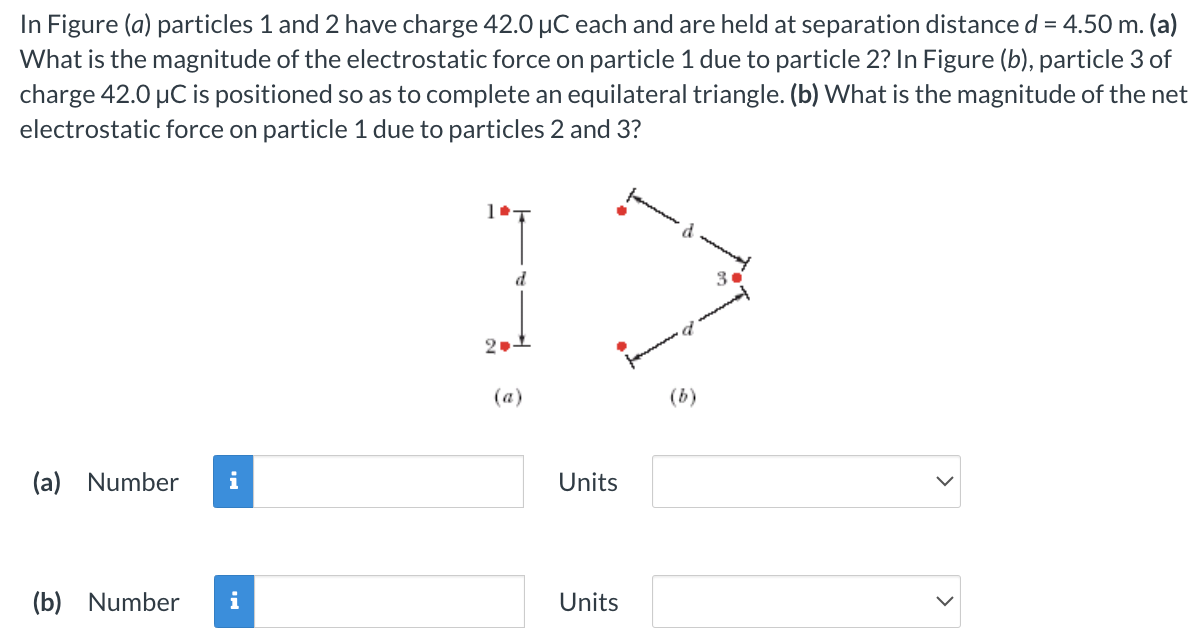In Figure (a) particles 1 and 2 have charge 42.0 μC each and are held at separation distance d = 4.50 m. (a) What is the magnitude of the electrostatic force on particle 1 due to particle 2? In Figure (b), particle 3 of charge 42.0 μC is positioned so as to complete an equilateral triangle. (b) What is the magnitude of the net electrostatic force on particle 1 due to particles 2 and 3? (a) (b) (a) Number Units (b) Number Units
